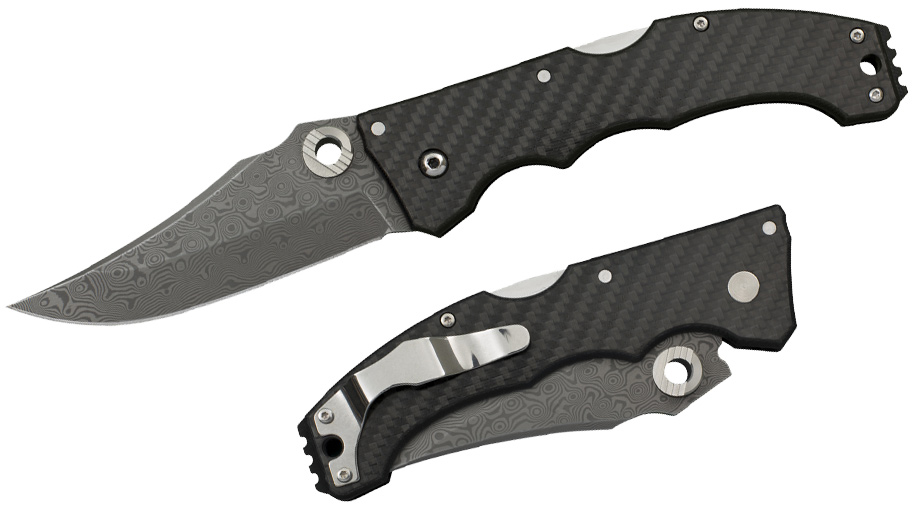Advice, Buying Guides, Glossary
Knife Handle Materials
There are so many options when it comes to the material a knife handle is made from.
Organic materials such as wood and bone remain a popular choice, but with super hard materials like titanium and Micarta available the options are many and varied.
Hopefully this guide to the different knife handle materials will help you make an informed choice.
Wood
There are various different types of wood used in the manufacture of knife handles. This makes the choice of handle even harder – look and feel are important things to consider.
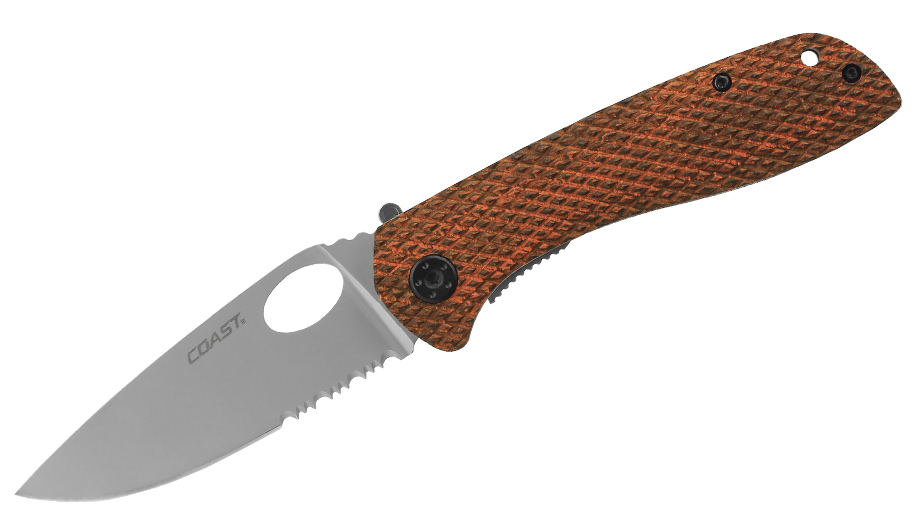
Ideally, hardwoods and stabilised woods make for a better handle, rather than soft woods which would suffer from being used in wet conditions.
Stabilised woods are types of plywood compressed with resin. They make for a handle that is both beautifully natural looking whilst still being extremely strong and durable.
The choices available are so varied, it really does come down to personal preference – all part of the excitement of collecting knives!
Strengths – Variety, durable, attractive, comfortable to use
Weaknesses – Can be porous and damaged by the elements.
The knife featured above is a Coast DX312 Black Magic with wood handle.
Stag
Stag knife handles are made from deer antlers which have fallen off naturally. The natural texture of a stag knife handle provides an excellent grip and makes them very hard wearing.
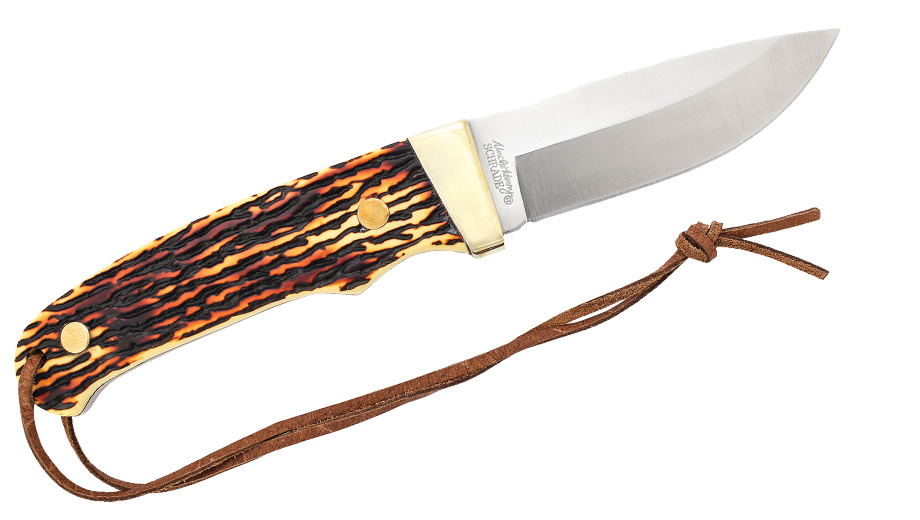
They look more ‘traditional’ than man made knife handles and can be found on all sorts of knives, from the extremely cheap to the ridiculously expensive.
It makes for a great all rounder for those looking for a more natural looking and classic design.
If you want the natural look but don;t like the idea of using animal material, Staglon is an option. It’s a type of plastic moulded and painted to look like stag.
Strengths – Inexpensive, durable, attractive
Weaknesses – Can be porous, susceptible to cracking and shock damage
The knife featured above is a Uncle Henry Pro Hunter with Staglon Handle.
Leather
Leather is not a very popular option, but a really nice material for knife handles. These days leather handles are normally seen on classic hunting and military knives.
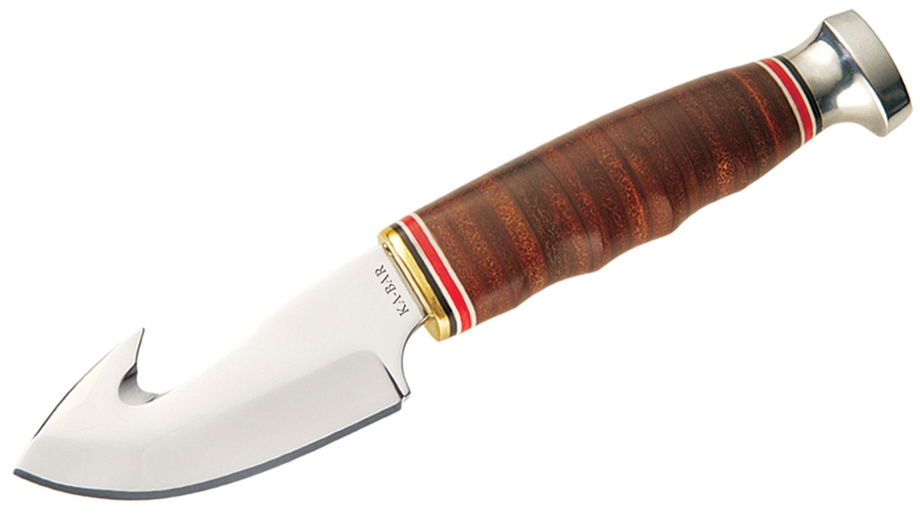
During manufacturing the leather is tightly wrapped around another material, or the handle is made up of compressed leather ‘washers’ stacked on the tang. When ground and polished they look very attractive and are comfortable to use.
They are not as durable as other knife materials and will require maintenance to keep them at their best. In most instances you’ll see leather used alongside other materails to give an ‘accent’ to the design
Strengths – Inexpensive, traditional, comfortable
Weaknesses – not as strong or durable, requires care
The knife featured above is a KA-BAR Game Hook with Stacked Leather Handle.
Rubber
Rubber is not a very popular choice for knife handles, but for certain knives it is a definite advantage.

Rubber is water resistant so is useful all year round. Also, rubber has natural shock absorbing properties, so when used with a knife designed for chopping it certainly pays off.
Usually rubber will be used in conjunction with other materials, as on it’s own it can tear as it isn’t as strong as other knife handle materials.
Strengths – shock absorbing, water resistant, resistant to corrosion
Weaknesses – prone to damage
The knife featured above is a Imperial Badger Snowblind Liner Lock Folding Knife with an Aluminum and Rubber Handle.
Paracord
Knives with a paracord handle tend to be a ‘back to basics’ design.
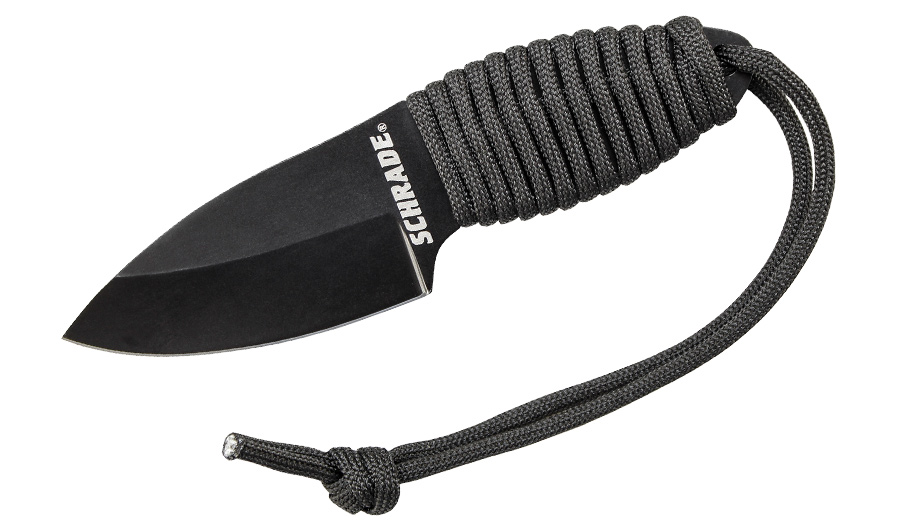
Normally they have a skeletonised frame with paracord wrapped around it. This makes for a much lighter knife overall.
If need be, the paracord can be removed from the handle and used elsewhere – quite handy in certain situations.
The downside to paracord knife handles is that they aren’t as comfortable to use for long periods of time. Also, long term maintenance will be required.
Strengths – makes for a lighter overall knife, paracord can be used separately
Weaknesses – requires maintenance, not as comfortable
The knife featured above is a Schrade Full Tang Fixed Blade Neck Knife.
Stainless Steel
Stainless steel is not just reserved for knife blades, you can also get knife handles made from this ubiquitous material.
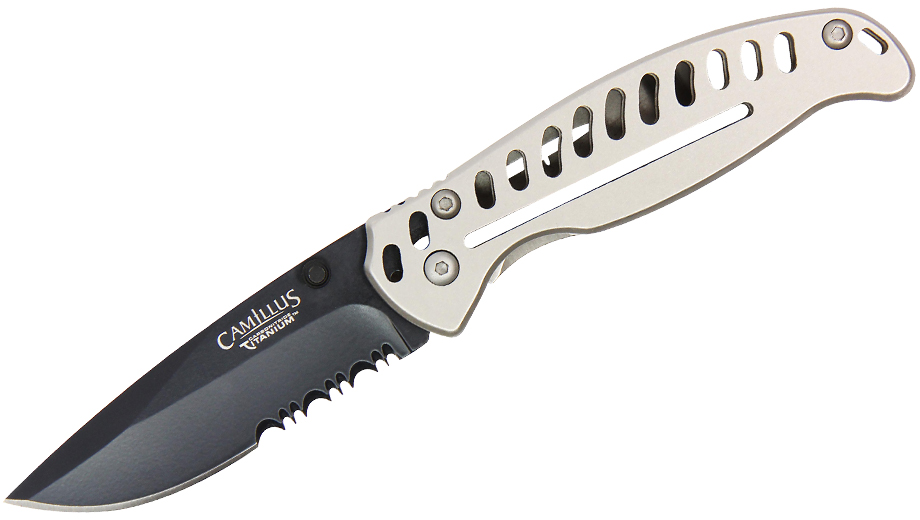
The benefits that stainless steel bring to a knife blade are also evident in the handle – good corrosion resistance and durability.
Whilst it isn’t as strong or light as titanium, it is significantly cheaper. As stainless can be slippery, they are often etched or used with rubber or plastic to improve the grip.
Strengths – Durable, strong and resistant to corrosion
Weaknesses – Can be heavy and slippery
The knife featured above is a Camillus EDC3 Folding Knife.
Aluminium
Aluminium is a very strong, lightweight and durable material and lends itself well to knife handles.
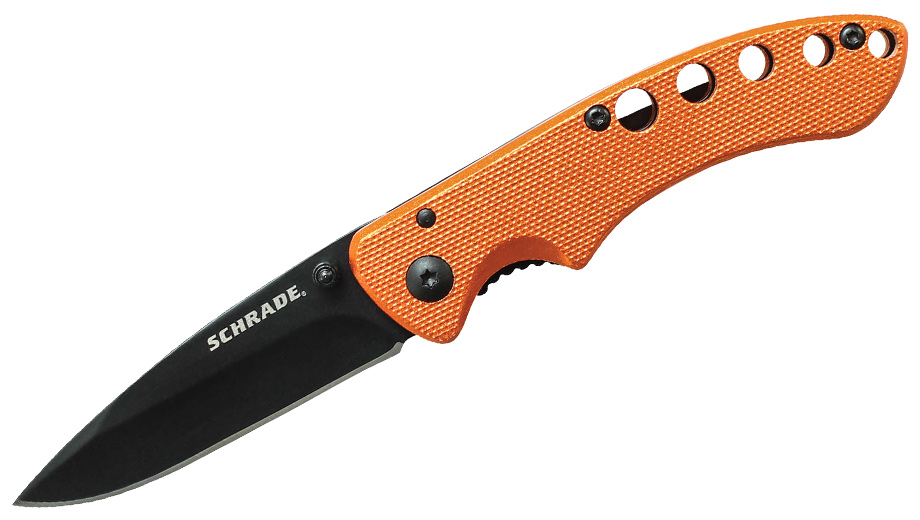
Often aluminium handles are anodised to give them an extra layer of toughness.
When properly textured they can provide a strong, reassuring grip that is excellent for extended use. In winter though, the handle may become very cold to use.
Strengths – Light, strong, durable, resistant to corrosion
Weaknesses – Easier to scratch than some materials, cold to hold, can be slippery
The knife featured above is a Schrade Aluminum Folding Knife.
Titanium
Titanium is a metal alloy that is both lightweight and extremely durable. It has many of the properties of aluminium, but is more expensive to manufacture.
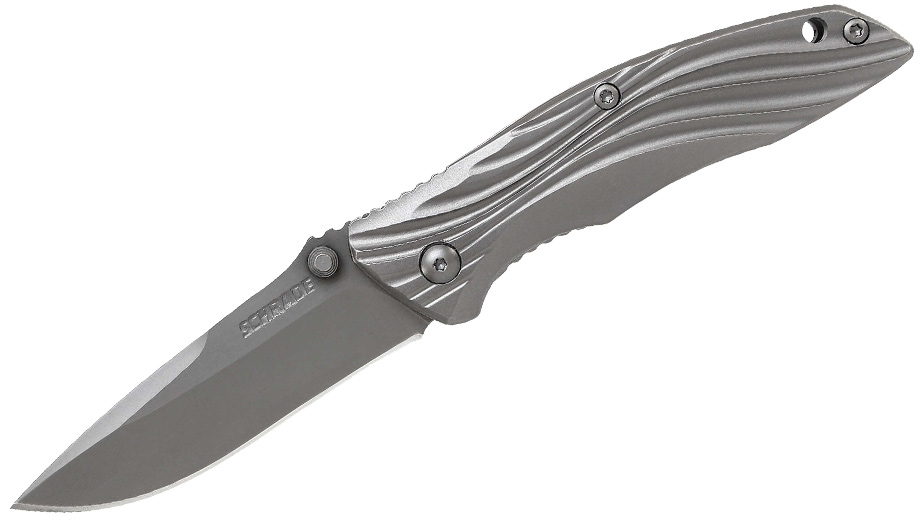
One advantage it has over aluminium is that it feels ‘warm’ in the hand, so makes for a much better all year knife.
Like aluminium, it can also be anodised so the choice of colours and designs are many and varied, but is still prone to scratching.
Strengths – Light, strong, resistant to corrosion
Weaknesses – Expensive, easier to scratch than some materials
The knife featured above is a Schrade Drop Point D2 Steel Blade with Titanium Handle.
Carbon Fibre
Carbon fibre is a generic term applied to material which is made from thin, woven strands of carbon.
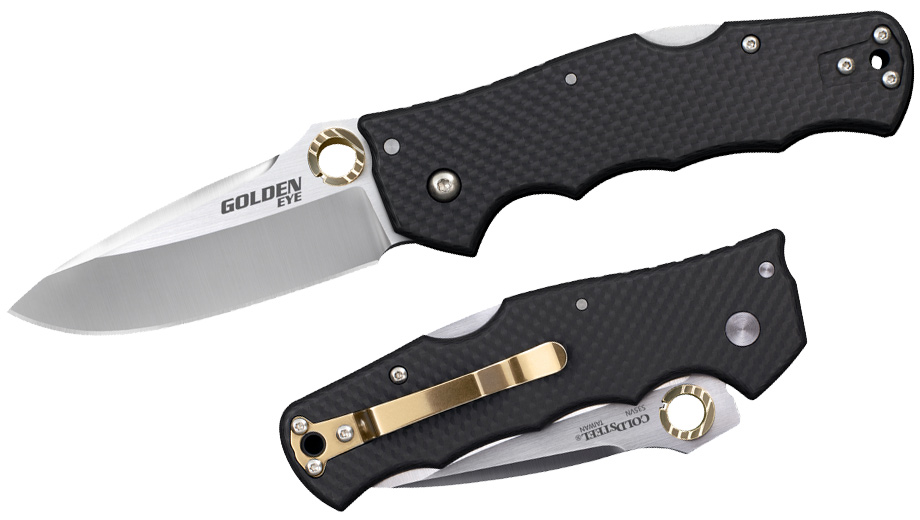
Knives with a carbon fibre handle actually have handles that are made with carbon fibre and polymers – basically making a super strong plastic.
Whilst extremely strong, it can be brittle so can suffer from shock damage.
Manufacturing carbon fibre handles for knives is labour intensive, so tends to add to the price of the knife. Normally only available on higher end knives. The way that the carbon fibre ‘weave’ catches the light makes it a very attractive proposition.
Strengths – Light, strong, resistant to corrosion, attractive
Weaknesses – Expensive to manufacture, can be brittle and subject to shock damage
The knife featured above is a Cold Steel Golden Eye Elite.
G-10
G-10 is a material which is similar in structure to carbon fibre at a fraction of the cost. It is made from compressed fibreglass and resin, which is baked under pressure, to create a handle which is very strong and lightweight.
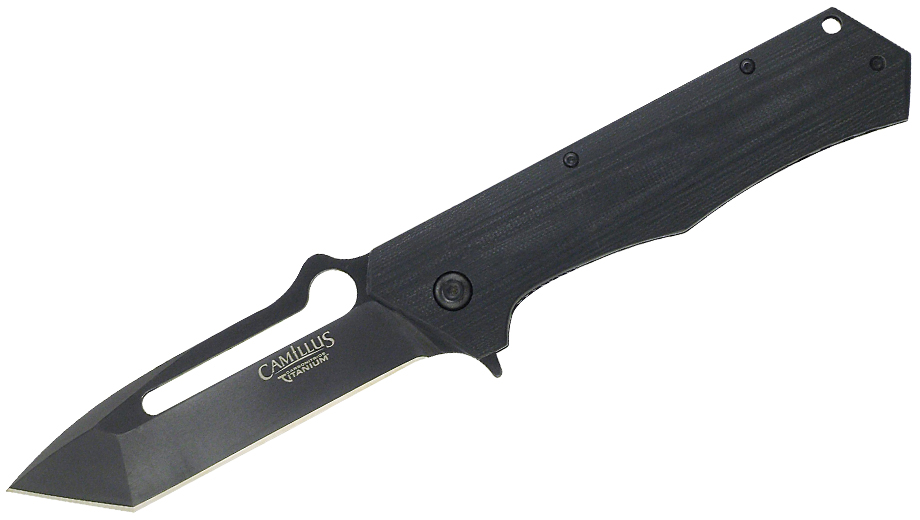
G-10 is often used in survival, tactical and outdoor knives as it is water resistant, grippy and tough.
Normally it comes in black, but other coloured G-10 handles are available. It’s a great choice for a knife handle and very budget friendly.
Strengths – Light, tough, durable, inxepensive
Weaknesses – Can be brittle and subject to shock damage
The knife featured above is a Camillus TitaniumBeast Folding Knife with G-10 Handle.
Zytel/FRN
Zytel is a DuPont branded variant of an FRN (Fibreglass Reinforced Nylon) which is extremely strong, abrasion resistant and inexpensive.
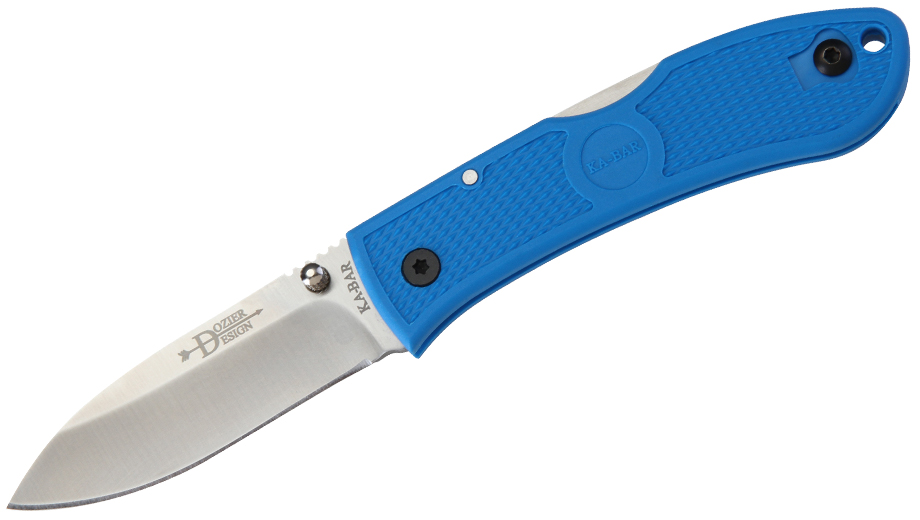
It makes a popular knife handle choice as it is such a great all round material. As it is made using injection moulding it lends itself well to high volume manufacturing.
Often texture or other handle augmentations are made to make the handle comfortable to hold as it can feel a little ‘cheap’ and plasticky.
Strengths – almost unbreakable, inexpensive
Weaknesses – can feel a bit ‘cheap’, not as grippy as some materials
The knife featured above is a KA-BAR Dozier Folding Hunter.
Micarta
Micarta is an extremely hard material which is made by compressing layers of fibrous fabric (canvas, paper or other material) with a phenolic resin.
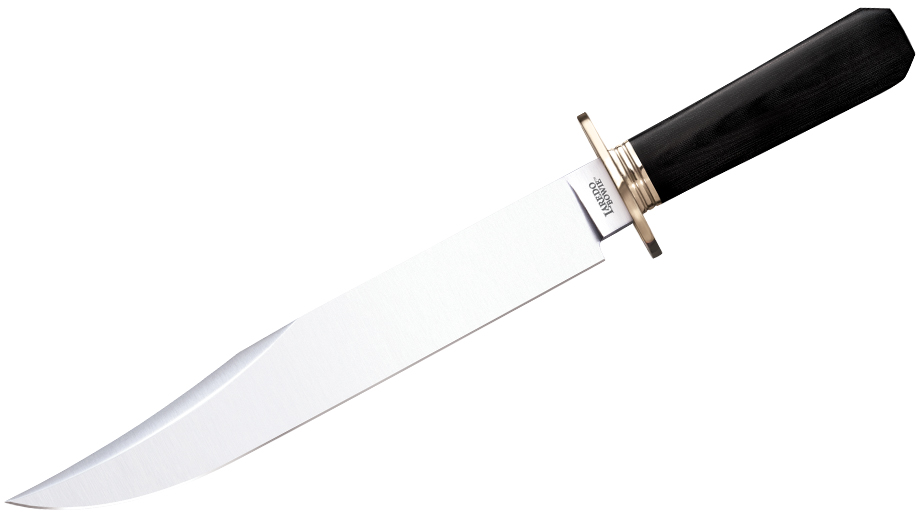
Whilst not as hard as G-10, it is still extremely durable. Unfortunately, this hardness means it requires a lot of work to get a texture on the surface otherwise it would be extremely slippery and less practical for a knife handle.
The extra labour involved means that knives with a Micarta handle can be pricey. It is available in a nice range of colours and attractive to look at.
Strengths – Strong, durable and light
Weaknesses – Expensive to manufacture, can be brittle and subject to shock damage
The knife featured above is a Cold Steel Laredo Bowie with Micarta Handle.
This is not an exhaustive list but covers the most popular handle materials.
Hopefully it gives you enough information on the different types of knife handle available to make an informed choice.

